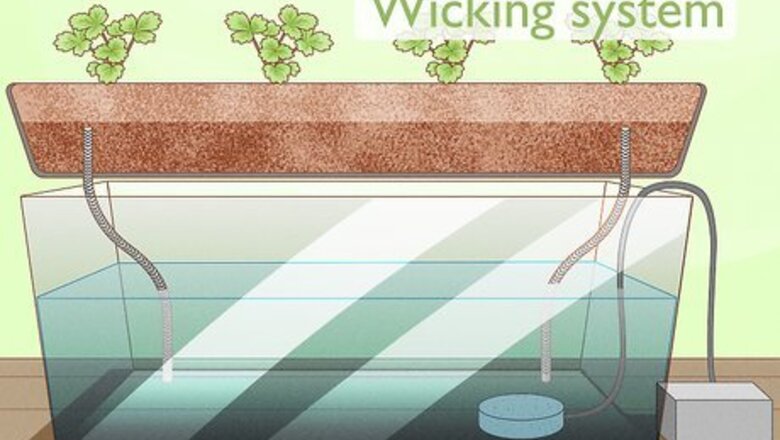
views
Preparing Your Hydroponic System
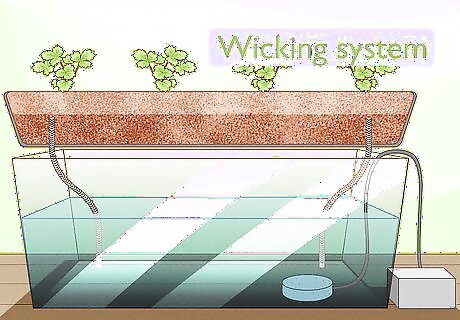
Grow strawberries with the wicking system. Though there are several ways to grow plants hydroponically, using the wicking system is the easiest method and requires the least amount of materials. It is also well-suited for small plants, such as strawberries. Other hydroponic methods include a deep water culture system, a nutrient film technique system, an ebb and flow system, an aeroponics system, and a drip system.

Choose a well-lit location. You'll want to select a temperate, well-lit location for your hydroponic system. Hydroponic strawberries need a temperature range of 57° F to 70° F (13.8° C to 21.1° C). If you don't have an area with lots of natural light, you'll need to install artificial growing lights.

Pick a nutrient solution specific to strawberries. It is recommended that beginners purchase a nutrient solution rather than making their own. This will ensure the ratios of the nutrients are fit for the specific plant you intend to grow. Strawberries require nitrogen, phosphorous, potassium, calcium, and magnesium to grow properly. You can find nutrient solutions at hydroponic and garden shops.
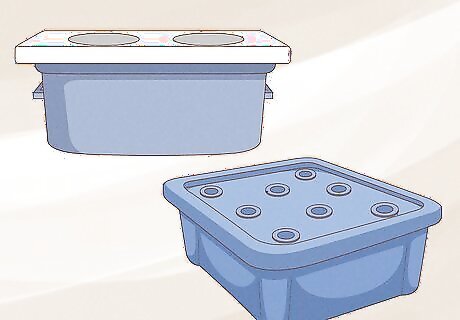
Choose a reservoir. Pick a large tub or bucket to act as your reservoir. Ensure it is deep enough to hold a lot of the nutrient solution, otherwise you will spend lots of time refilling it. You should also make sure your growing containers will fit on top of the reservoir.
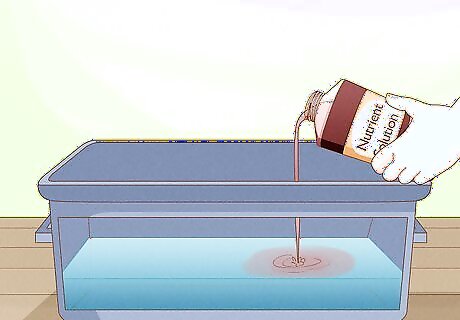
Fill the reservoir with water and your nutrient solution. Mix your hydroponic nutrients with water according to the package directions. Be sure to use the amount of water directed; too much or too little and your strawberries will not grow correctly.
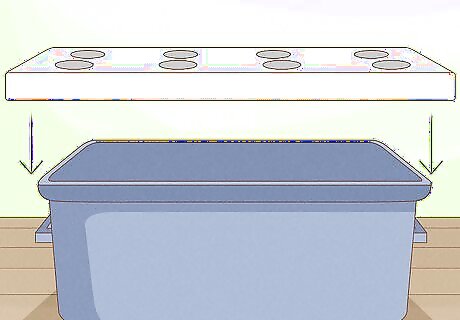
Set up the growing container. You can use one large trough in which all your plants will sit, or individual pots for each plant. The growing container should rest sturdily on top of the reservoir; be sure to hang or anchor it if it does not.

Prepare your wicks. This is the most important part of the system, as the wicks deliver the nutrients to the plant. Choose something that is absorbent yet resistant to rotting. You may want to experiment and see which type of wick works best for your set-up. Fibrous rope, rayon rope, nylon rope, cotton rope, tiki torch wicks, polyurethane yarn, wool felt strips, or polyurethane felt strips are all commonly used for wicks. Be sure to clean and rinse all wicks before using to remove any chemicals that could damage your plants.
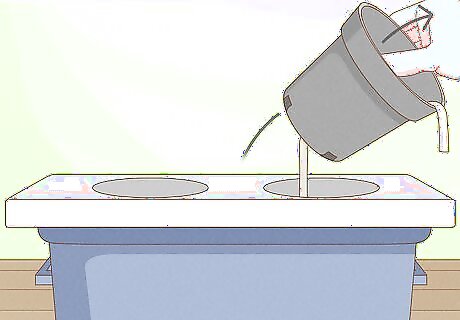
Place your wicks between the reservoir and the growing container. The wicks need to deliver water from the reservoir to growing containers. If you use separate pots, you will also need to use a wick for each one. If you use a trough, add three or more wicks to ensure enough liquid will be able to reach your strawberry plants. Place each wick with one end in the reservoir and one end in the growing container.
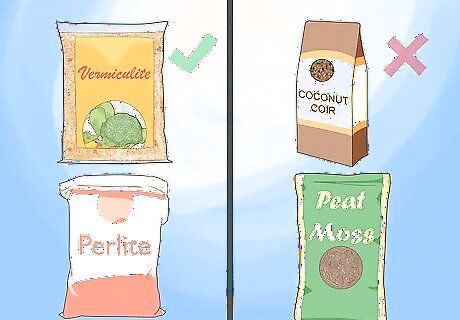
Choose a growing medium. This medium will replace the soil that is typically used for growing plants. You'll want to choose a growing medium like perlite or vermiculite for strawberries. Avoid using mediums that are too absorbent, like coconut coir or peat moss, as they may soak up too much of your nutrient solution and suffocate the plant.
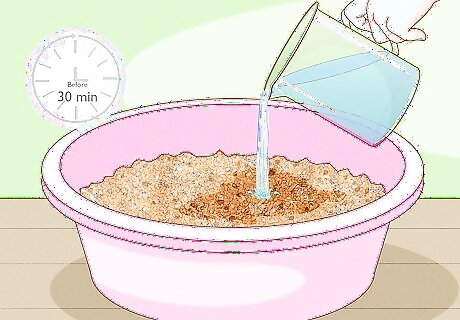
Saturate your growing medium before filling the container. It is important to soak your growing medium in pH-balanced water prior to adding it to the growing container. Soak your medium for at least 30 minutes before filling the container to ensure the medium doesn't act like a sponge and suck all the nutrients from the root of your plant. Fill the container only ⅔ full, as you need to leave room for your rootstock.
Growing Strawberries
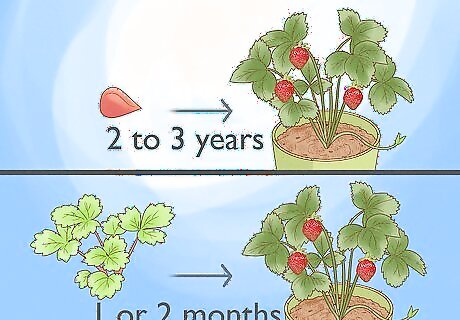
Start with rootstock. Growing strawberries from seed can take two to three years to produce fruit, while rootstock will produce fruit within a month or two, depending on the variety. Ever-bearing or day-neutral varieties are recommended for indoor growers.
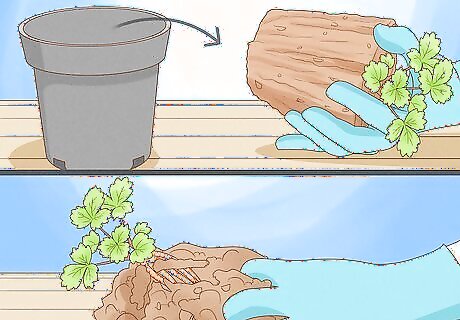
Carefully remove a strawberry plant from its container. Clean the soil from the roots by gently shaking. You can also lightly tap the dirt clinging to the roots with your fingers. Remove any dry, brittle, or dead leaves at this point as well.
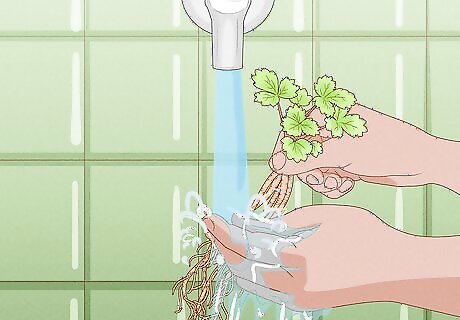
Rinse the roots. Carefully rinse the roots under cool, running water. Be extremely careful when you are rinsing the soil from the roots; if you break too many of the root hairs, your plant won't produce as much fruit.
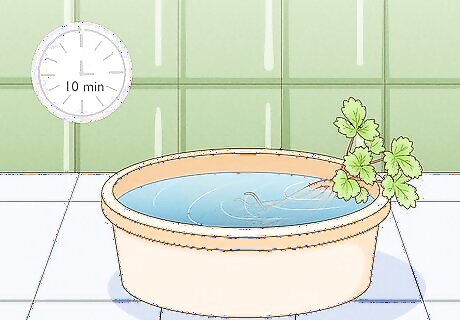
Immerse the entire root system in water. Fill a bucket with cold water and soak the root system of your strawberry plant for at least 10 minutes. This will ensure all dirt has been removed as well as prevent the strawberries' runner roots from dehydrating when they are transplanted.
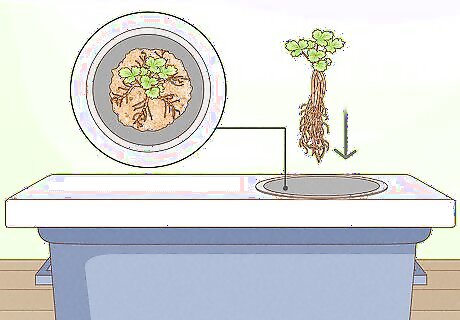
Place your strawberry plant in the container. Carefully hold the crown of the plant and arrange the roots so that they are splayed over the growing medium.
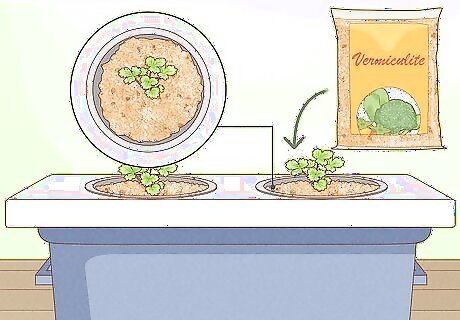
Cover the roots with growing medium. Add enough of your growing medium to fully cover the roots of your strawberry plant. Be sure you don't cover the crown of the strawberry plant; it must have light and air.
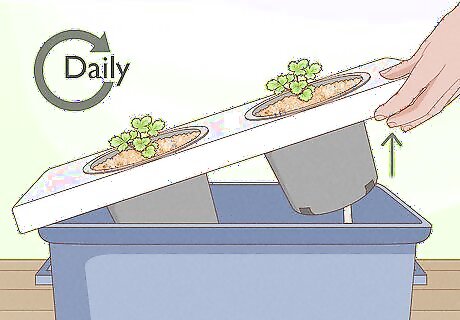
Check the reservoir level daily. You'll want to keep a close eye on the reservoir level to ensure your strawberries are getting enough of the nutrient solution. Keeping the reservoir full will ensure the solution has a shorter path to travel through the wick to reach the strawberries. If your level is low, be sure to pre-mix the nutrient solution according to the directions before adding it to the reservoir.
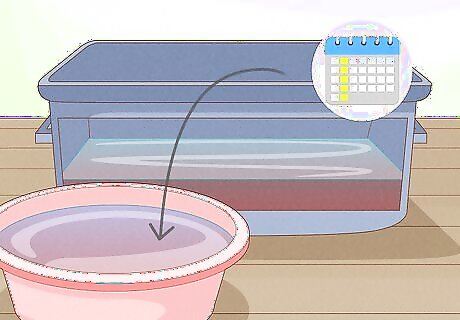
Flush your growing medium. Once per week you should flush your growing medium with water. This will remove excess nutrients, such as mineral salts, from the medium that your plant has not absorbed.
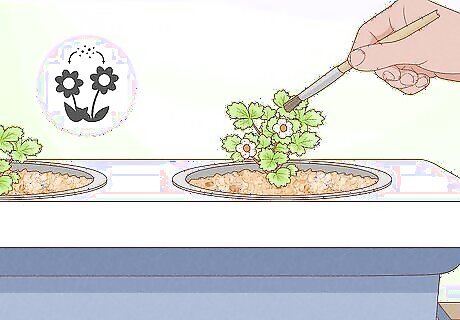
Hand-pollinate your strawberries. Because there are no bees and birds indoors, you must hand-pollinate your strawberries once the petals are fully opened. Use a small, soft makeup brush or paintbrush to brush pollen from the stamen (male part, brownish in color) to the pistil (female part, yellow-greenish). Be sure to pollinate the entire pistil, or your strawberry plant may not produce fruit.
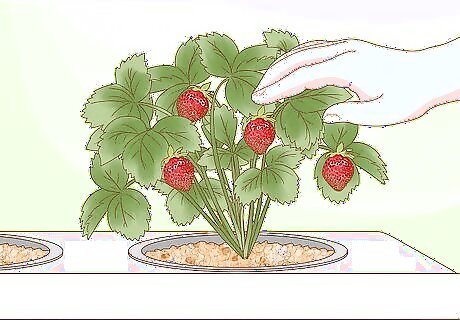
Harvest your strawberries. Strawberries, unlike some other fruits, will not continue to ripen after they are picked. Don't harvest your strawberries until they are completely ripe. When ripe, they will be red and somewhat firm to the touch. Once the berries have grown to a desirable size and turned red, carefully pluck them off the vine. Rinse them thoroughly before eating, and enjoy!













Comments
0 comment